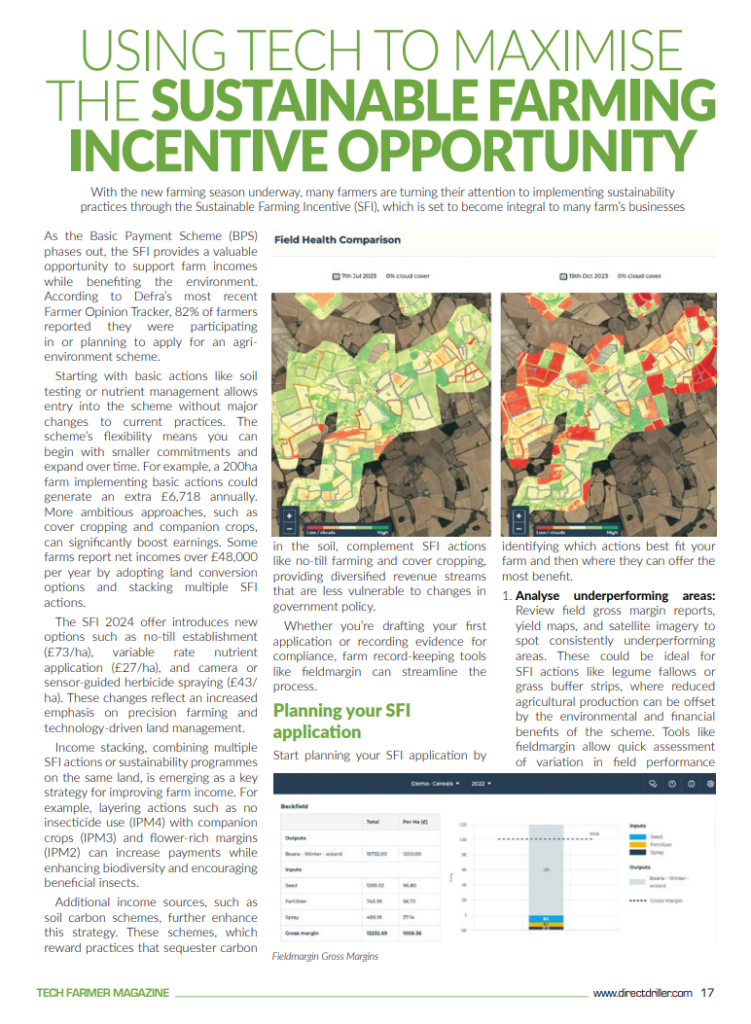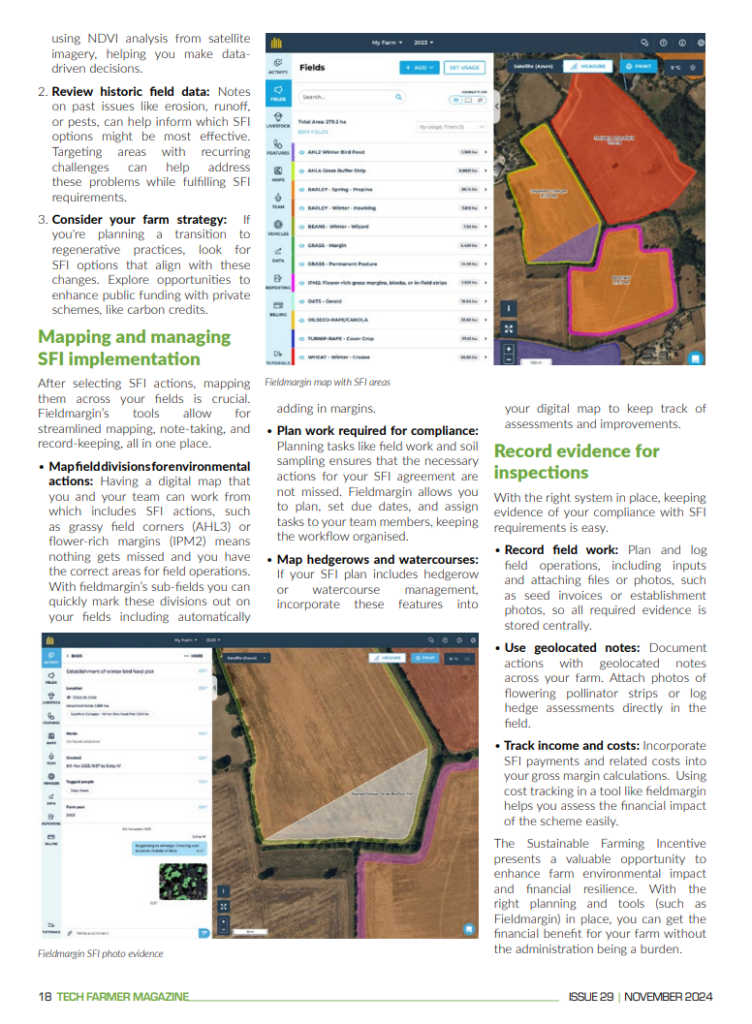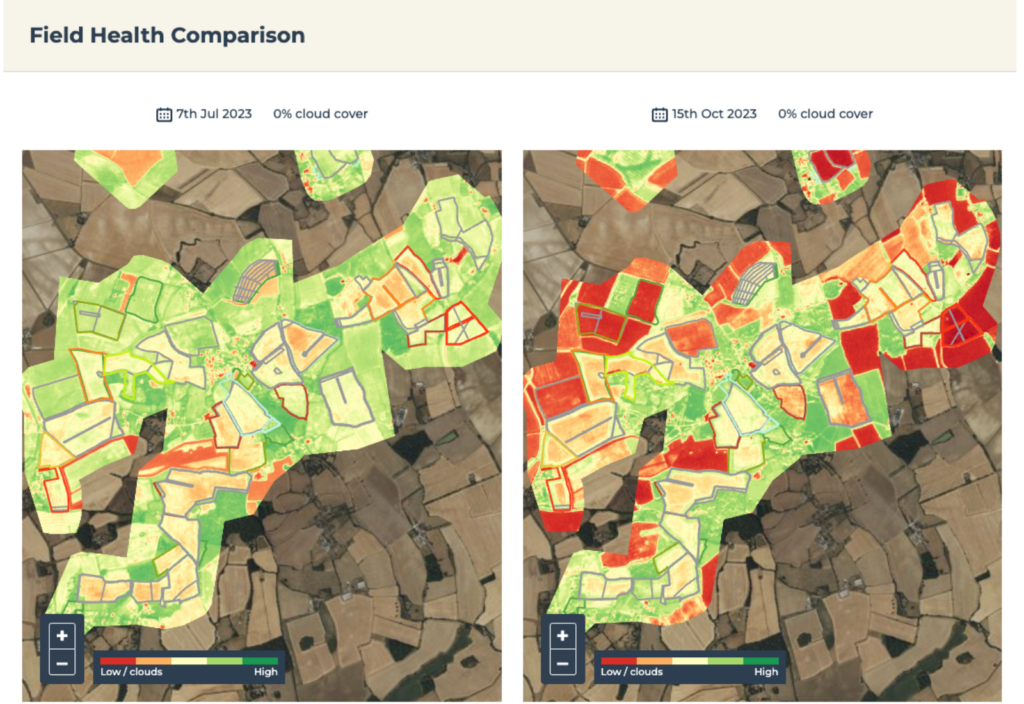With harvest wrapping up and the new farming season underway, many farmers are turning their attention to implementing sustainability practices through the Sustainable Farming Incentive (SFI), which is set to become integral to many farm’s businesses. As the Basic Payment Scheme (BPS) phases out, the SFI provides a valuable opportunity to support farm incomes while benefiting the environment. According to Defra’s most recent Farmer Opinion Tracker, 82% of farmers reported they were participating in or planning to apply for an agri-environment scheme.
Starting with basic actions like soil testing or nutrient management allows entry into the scheme without major changes to current practices. The scheme’s flexibility means you can begin with smaller commitments and expand over time. For example, a 200ha farm implementing basic actions could generate an extra £6,718 annually. More ambitious approaches, such as cover cropping and companion crops, can significantly boost earnings.
Some farms report net incomes over £48,000 per year by adopting land conversion options and stacking multiple SFI actions. You can layer actions, such as no insecticide use (IPM4) with companion crops (IPM3) and flower-rich margins (IPM2), to increase payments while enhancing biodiversity and encouraging beneficial insects.
The SFI 2024 offer introduces new options such as no-till establishment (£73 per hectare), variable rate nutrient application (£27 per hectare), and camera or sensor-guided herbicide spraying (£43 per hectare). These changes reflect an increased emphasis on precision farming and technology-driven land management.
Additional income sources, such as soil carbon schemes, further enhance this strategy. These schemes, which reward practices that sequester carbon in the soil, complement SFI actions like no-till farming and cover cropping, providing diversified revenue streams that are less vulnerable to changes in government policy.
Whether you’re drafting your first application or recording evidence for compliance, farm record-keeping tools like fieldmargin can streamline the entire process.
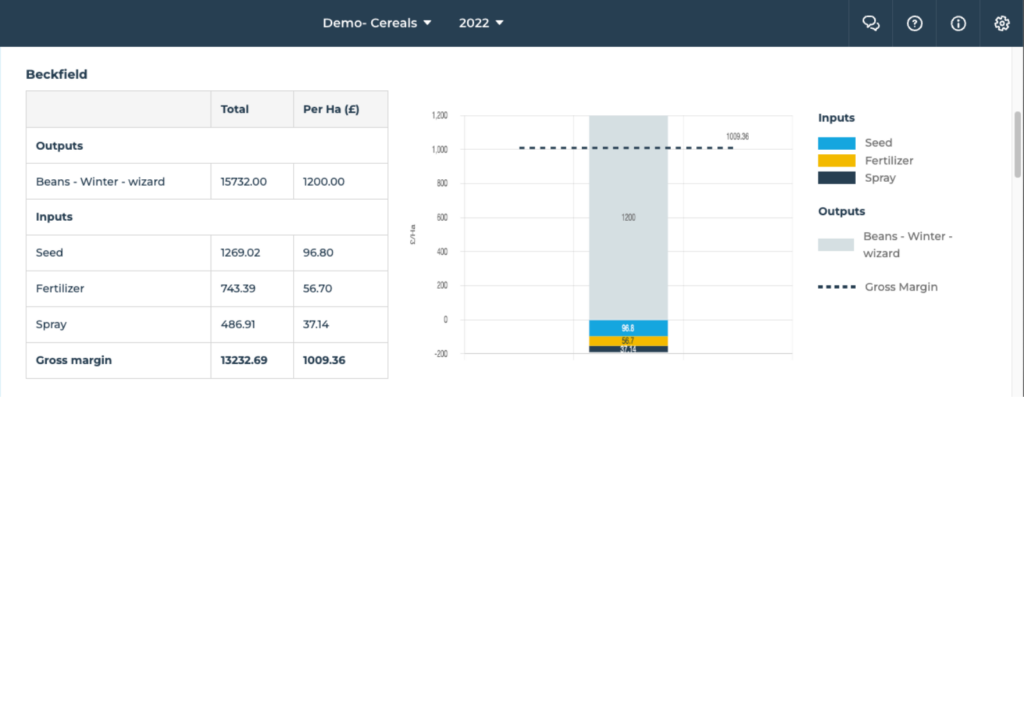
Planning Your SFI Application
Start planning your SFI application by identifying which actions best fit your farm and then where they can offer the most benefit.
- Analyse underperforming areas: Review field gross margin reports, yield maps, and satellite imagery to spot consistently underperforming areas. These could be ideal for SFI actions like legume fallows or grass buffer strips, where reduced agricultural production can be offset by the environmental and financial benefits of the scheme. Tools like fieldmargin allow quick assessment of variation in field performance using NDVI analysis from satellite imagery, helping you make data-driven decisions.
- Review historic field data: Notes on past issues like erosion, runoff, or pests, can help inform which SFI options might be most effective. Targeting areas with recurring challenges can help address these problems while fulfilling SFI requirements.
- Consider your farm strategy: If you’re planning a transition to regenerative practices, look for SFI options that align with these changes. Explore opportunities to enhance public funding with private schemes, like carbon credits.
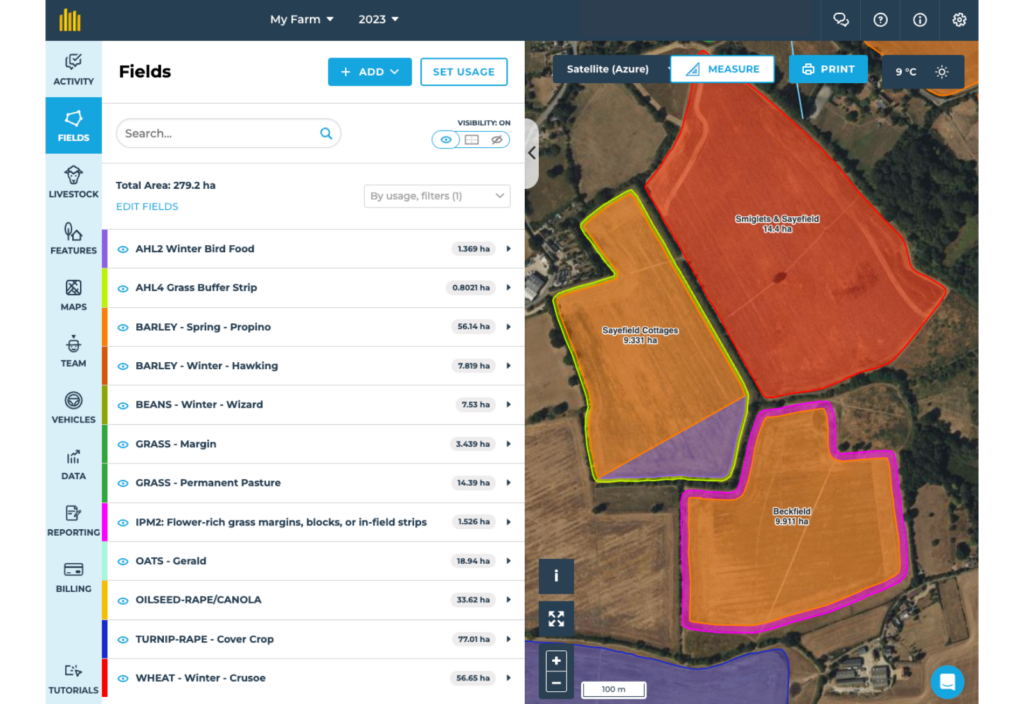
Mapping and Managing SFI Implementation
After selecting SFI actions, mapping them across your fields is crucial. Fieldmargin’s tools allow for streamlined mapping, note-taking, and record-keeping, all in one place.
- Map field divisions for environmental actions: Having a digital map that you and your team can work from which includes SFI actions, such as grassy field corners (AHL3) or flower-rich margins (IPM2) means nothing gets missed and you have the correct areas for field operations. With fieldmargin’s sub-fields you can quickly mark these divisions out on your fields including automatically adding in margins.
- Plan work required for compliance: Planning tasks like field work and soil sampling ensures that the necessary actions for your SFI agreement are not missed. Fieldmargin allows you to plan, set due dates, and assign tasks to your team members, keeping the workflow organised.
- Map hedgerows and watercourses: If your SFI plan includes hedgerow or watercourse management, incorporate these features into your digital map to keep track of assessments and improvements.
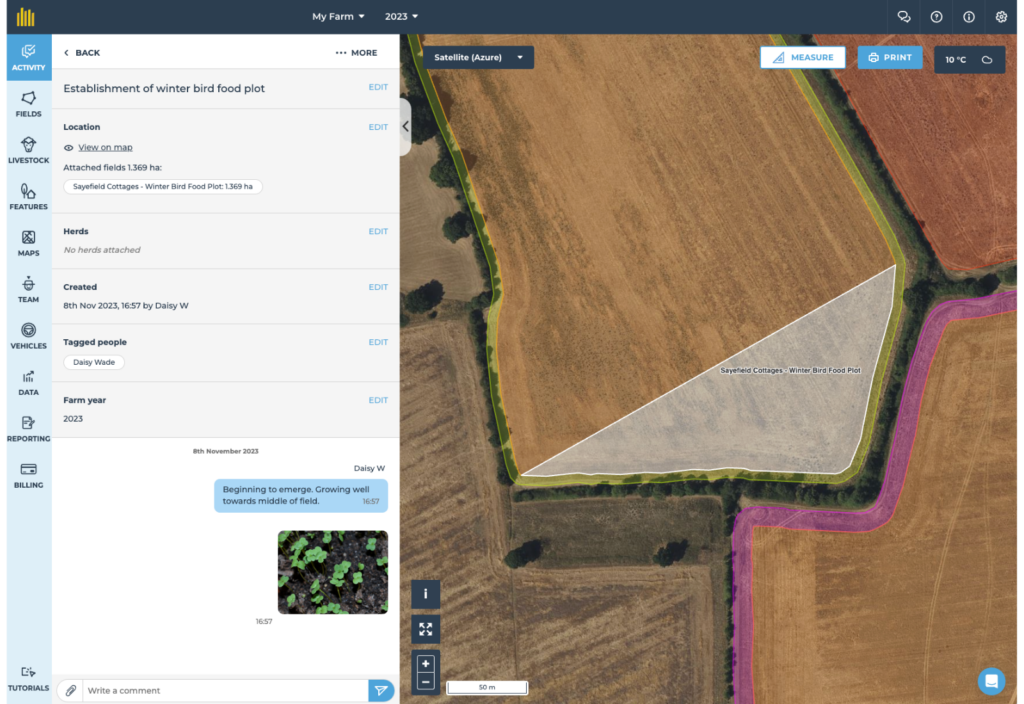
Record Evidence for inspections
With the right system in place, keeping evidence of your compliance with SFI requirements is easy.
- Record field work: Plan and log field operations, including inputs and attaching files or photos, such as seed invoices or establishment photos, so all required evidence is stored centrally.
- Use Geolocated Notes: Document actions with geolocated notes across your farm. Attach photos of flowering pollinator strips or log hedge assessments directly in the field.
- Track Income and Costs: Incorporate SFI payments and related costs into your gross margin calculations. Using cost tracking in a tool like fieldmargin helps you assess the financial impact of the scheme easily.
The Sustainable Farming Incentive presents a valuable opportunity to enhance farm environmental impact and financial resilience. With the right planning and tools (such as fieldmargin) in place, you can get the financial benefit for your farm without the administration being a burden.
